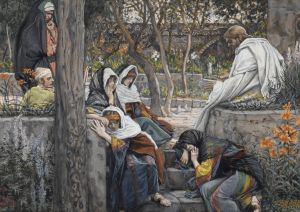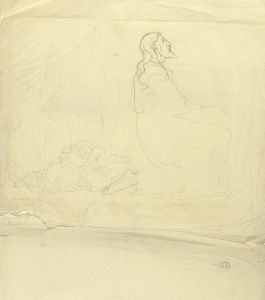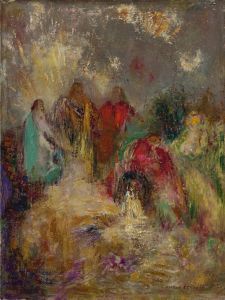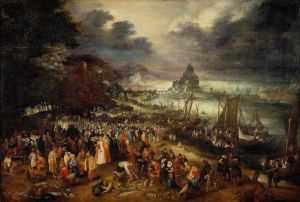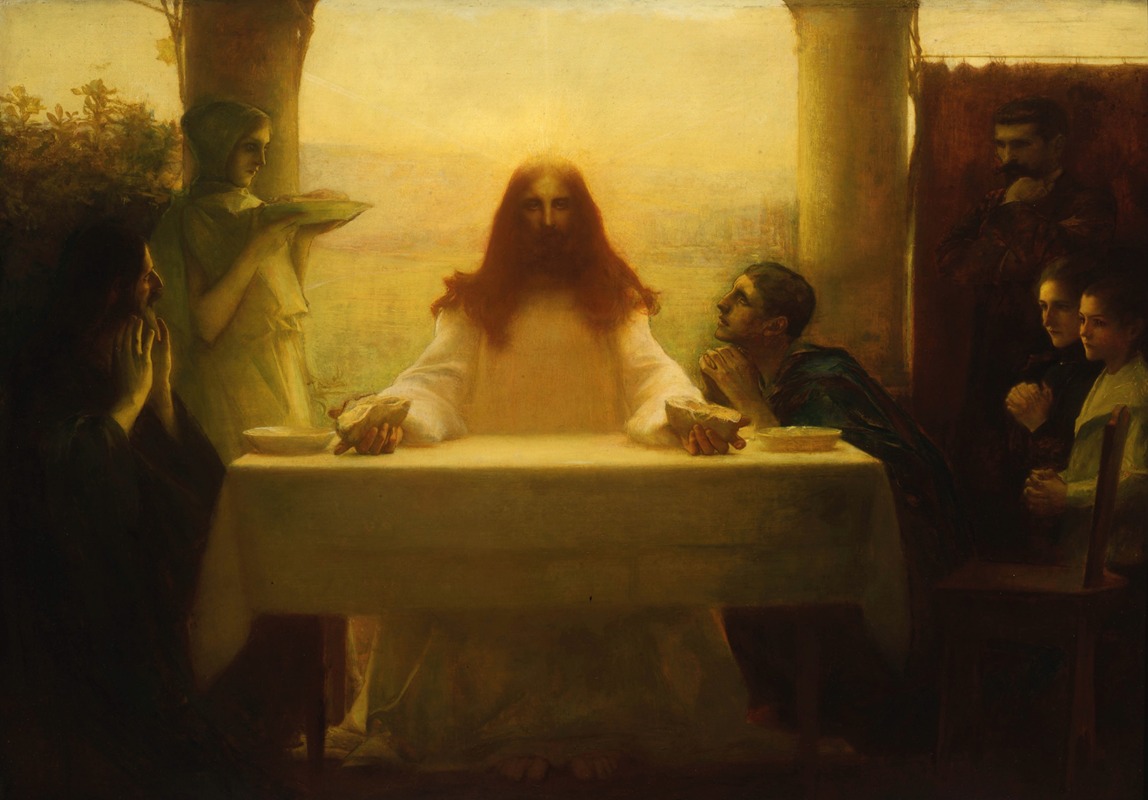
Christ and the Pilgrims at Emmaus
A hand-painted replica of Pascal-Adolphe-Jean Dagnan-Bouveret’s masterpiece Christ and the Pilgrims at Emmaus, meticulously crafted by professional artists to capture the true essence of the original. Each piece is created with museum-quality canvas and rare mineral pigments, carefully painted by experienced artists with delicate brushstrokes and rich, layered colors to perfectly recreate the texture of the original artwork. Unlike machine-printed reproductions, this hand-painted version brings the painting to life, infused with the artist’s emotions and skill in every stroke. Whether for personal collection or home decoration, it instantly elevates the artistic atmosphere of any space.
"Christ and the Pilgrims at Emmaus" is a notable painting by the French artist Pascal-Adolphe-Jean Dagnan-Bouveret, a prominent figure in the late 19th and early 20th-century art scene. Dagnan-Bouveret was known for his meticulous attention to detail and his ability to capture the nuances of human emotion, which is evident in this particular work.
The painting depicts a scene from the New Testament, specifically from the Gospel of Luke 24:13-35, where Jesus appears to two of his disciples on the road to Emmaus following his resurrection. This biblical event has been a popular subject in Christian art, symbolizing revelation and the recognition of the divine in everyday life. Dagnan-Bouveret's interpretation of this scene is both intimate and profound, capturing the moment of realization and spiritual awakening experienced by the disciples.
Dagnan-Bouveret was part of the Naturalist movement, which sought to depict subjects with a high degree of realism and attention to detail. This approach is evident in "Christ and the Pilgrims at Emmaus," where the artist employs a realistic style to convey the emotional depth of the scene. The figures are rendered with lifelike precision, and the use of light and shadow enhances the dramatic effect of the moment when the disciples recognize Christ.
The composition of the painting is carefully structured to draw the viewer's eye to the central figure of Christ, who is depicted with a serene and compassionate expression. The disciples, on the other hand, are shown in various states of surprise and reverence, their gestures and facial expressions conveying a sense of awe and wonder. The setting is modest, reflecting the humble circumstances of the biblical narrative, yet it is imbued with a sense of the sacred through Dagnan-Bouveret's masterful use of light.
Dagnan-Bouveret's work is characterized by its technical excellence and emotional depth, and "Christ and the Pilgrims at Emmaus" is no exception. The painting reflects the artist's interest in religious themes and his ability to convey complex spiritual experiences through the medium of paint. It is a testament to his skill as a painter and his deep engagement with the subjects he chose to depict.
Throughout his career, Dagnan-Bouveret received numerous accolades for his work, and he was highly regarded by his contemporaries. His paintings were exhibited widely, and he was a regular participant in the Paris Salon, where he gained considerable recognition. "Christ and the Pilgrims at Emmaus" is one of the many works that exemplify his contribution to the art world and his enduring legacy as a painter of religious and genre scenes.
In summary, "Christ and the Pilgrims at Emmaus" by Pascal-Adolphe-Jean Dagnan-Bouveret is a significant work that captures a pivotal moment from the Christian narrative with realism and emotional depth. The painting is a reflection of the artist's skill and his ability to convey profound spiritual themes through his art.





